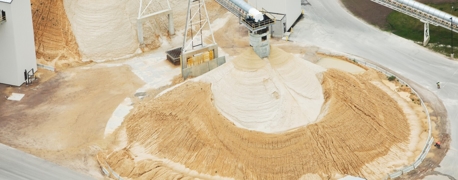Creating a Pre-Lift Plan to Prevent Crane Accidents

When a crane accident occurs, devastating injuries can result both to the workers using the equipment and to innocent bystanders. Some of the most common causes of crane accidents include overloading a crane, operating it on a non-level site and not maintaining good communication between operators and other workers involved in the lift. All of these issues, fortunately, are avoidable and can be addressed in an appropriately thought out pre-lift plan. However, should an accident result anyway, an experienced industrial accident lawyer should be contacted as soon as possible.
A pre-lift plan should include:
- Description of the lift
- Crane positions and configurations
- Lift height
- Load radius
- Boom (steel arm) length and angle
- Size and weight of the load
- Percent of crane's rate of capacity
- Personnel involved
- Rigging plan
- Communication methods
- Ground conditions
- Environmental conditions
- Inspection procedures
In addition to all these calculations, a well-crafted pre-lift plan should employ a checklist to make sure that all the factors which may affect the lift have been considered.
Some of the items on the checklist would include:
- Has the crane been configured in accordance with the lift plan?
- Have the crane and rigging equipment been inspected to ensure they are in optimal working condition?
- Is the crane within one degree of level?
- Is the exact load weight known?
- Is the lift area clear of obstacles?
- Have the appropriate number of staff been allocated to manage the lift?
- Has a pre-lift meeting between the crane operator, signalperson, supervisor and other workers been held?
All of the above factors should be checked prior to beginning any type of lift involving a crane. When it comes to a "critical lift," however, further measures must be taken to ensure a safe and smooth operation. A "critical lift" is defined as one in which the load weight is 75% greater than the crane's rated capacity.
The term can also be used to refer to lifts during which:
- Loads have to be flipped or turned
- The exact load weight is unknown
- Poor ground conditions are involved
- Several cranes are being used
- Pieces may be unstable
- The load is out of view of the operator
- Power lines are nearby
- People are being hoisted
- High value, hazardous or explosive loads are being moved
When a critical lift is being undertaken, a licensed engineer or other qualified individual should prepare the pre-lift plan. Appropriate pre-lift planning is critical for the safety of anyone involved in crane operations, as well as any individuals who happen to be in the vicinity of the crane. If you or someone you love has been injured in a crane accident, you may be entitled to compensation. Contact a crane accident attorney from Arnold & Itkin today for a free and confidential consultation regarding your case.


